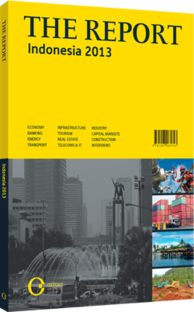Big spender: The drive to improve connectivity is leading to greater investment
A fast-rising technology leader in the region, Indonesia is spending more on information technology (IT) than any other country in ASEAN and is currently ranked 19th internationally, according to figures published by the International Data Corporation (IDC) in mid-2012. Low penetration rates suggest that more products will be sold as connectivity improves. According to IDC, Indonesia spent $10.9bn on IT in 2011 and spent an estimated $12.9bn in the sector in 2012, up 18.3% year-on-year. The consultancy forecasts IT sales in South-east Asia to hit $54.7bn in 2012.
MAINLY HARDWARE: The growth is driven by a number of factors. Consumers and companies are spending more on IT and related communications devices as connectivity improves and as prices fall. The market was also helped considerably by a 2012 government decision to end duties on computer components. Most of the spending is still on hardware, as Indonesian companies have a limited understanding and appreciation of enterprise resource planning software and are ill suited to buy off-the-shelf Western offerings because of the unique structure of local businesses. Piracy is also an issue, with many buying unlicensed software, leading to a lower overall software market size.
This is, however, set to change, and software sales will grow, becoming a larger part of overall IT spending. Rising prosperity, growing awareness of product offerings and an increased understanding of risk are driving firms to focus on software spending and development. Financial institutions are especially positive on this sort of investment. The increased sophistication of the sector, the introduction of a wide range of new products and services, the growing need to replace antiquated and inefficient systems, increasing competition and improved connections with more advanced financial markets make the introduction and upgrading of technology a necessity. IDC forecasts IT spending in the financial sector in Indonesia to grow 14.3% in 2012. Interestingly, the weakness of Indonesia’s network is also driving IT spending at banks, as they have to implement particularly robust solutions that can ensure continuity should there be failures or interruptions in the nation’s information grid.
E-GOVERNMENT: The government has also been investing in IT for a number of years, and the totals are set to increase over time. It is currently implementing a number of e-government initiatives. The e-government procurement programme, designed to reduce corruption and waste by creating a secure internetbased bidding system for government procurement contracts, was started with assistance from the US’s Millennium Capital Corporation in 2007.
The e-KTP, or resident identity card, programme also involves heavy government IT spending. The initiative, 10 years in the making, aims to register the entire population of the country and issue an identification card to each person. The programme is expensive, as it requires equipment such as fingerprint scanners to capture the required biometrics and database systems to maintain and integrate information with state departments and agencies. Significantly, all this has to be done securely and with an eye to preventing fraud. The original budget was Rp6.6bn ($66,000), though the Ministry of Home Affairs has asked for more money as it faces delays and cost overruns.
Spending on ICT for schools is also rising. The government wants to increase the number of computers available so that the ratio declines from one machine per 3200 students to one machine per 20. That would entail the buying of 2.5m computers. Furthermore, the implementation of the Master Plan for the Acceleration and Expansion of Indonesia Economic Development (MP3EI) will involve considerable spending. The government recognises that the lack of nationwide connectivity is a major bottleneck, and a good part of the MP3EI involves tackling that problem. The goal is to link all parts of the country to each other, and then link the country to the world. A national broadband network, network security, a national database and an independent domestic ICT industry are also on the agenda.
You have reached the limit of premium articles you can view for free.
Choose from the options below to purchase print or digital editions of our Reports. You can also purchase a website subscription giving you unlimited access to all of our Reports online for 12 months.
If you have already purchased this Report or have a website subscription, please login to continue.

